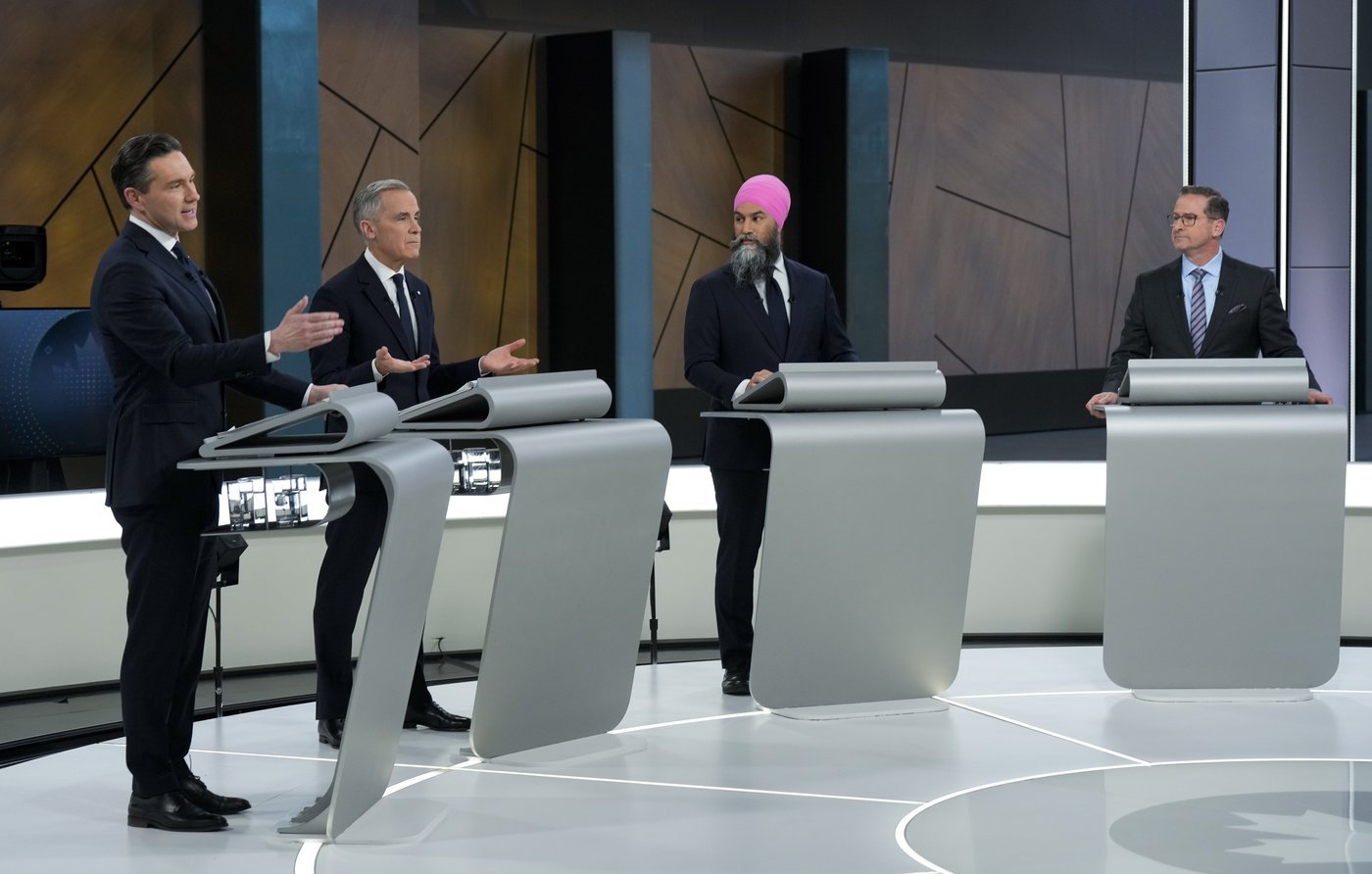
LATEST STORIES:


MONTREAL — With less than a week to go until election day, all of Canada’s major political parties have released their costed platforms. On Tuesday, Conservative Leader Pierre Poilievre became the last major party leader to unveil a platform, which he said would cut taxes and spur economic growth.
Liberal Leader Mark Carney was quick to accuse Poilievre of relying on “phantom numbers” in his platform. Poilievre said the Liberal plan proves Carney is “far more costly” than former prime minister Justin Trudeau.
Here’s a look at how the two platforms compare on some of the key issues in this campaign, from their responses to U.S. President Donald Trump’s trade war to their proposals to fix the housing crisis.
Responding to Trump and bolstering Canada’s economy
The 67-page Liberal platform opens with a declaration that Canada’s sovereignty is under threat from the United States. The document mentions tariffs 16 times and the trade war 13 times.
The 30-page Conservative platform leads with a focus on affordability and crime. It mentions tariffs seven times and uses the expression “trade war” just once.
Both parties include an estimated $20 billion in revenue from Canada’s counter-tariffs on the U.S. in their fiscal plans for this year. The Liberal platform promises that every dollar collected from reciprocal tariffs will go to protecting workers and businesses affected by the trade war. Poilievre has said the money would be returned to Canadians through tax cuts and targeted aid to industries.
The Liberals are pledging to respond to the tariff threat by eliminating all federal barriers to interprovincial trade. They are promising a $6.8-billion “nation-building project fund” and $5 billion to build new trade infrastructure, including ports, railways and highways.
The Conservatives say they would launch a $225-million “keep Canadians working fund” to protect the jobs of autoworkers targeted by the trade war, and would pursue a free trade deal with the United Kingdom, Australia and New Zealand.
Poilievre also has pitched an immediate economic boom in Canada’s resource sector, triggered by his planned repeal of various Liberal policies, including the Impact Assessment Act, also known as C-69. The platform claims that measure alone would yield nearly $1 billion in revenue over four years.
Spending, tax cuts and deficits
Neither the Liberals nor the Conservatives have any plan to balance the budget in the next four years. The Conservatives are planning to run $100 billion in deficits over a four-year term, while the Liberals are projecting nearly $225 billion in deficits.
The Conservative platform promises $34 billion in new program spending over four years, as well as $75 billion in tax cuts. The party is also aiming for $56 billion in savings by, among other things, cutting the amount the federal government spends on external consultants by $23.5 billion over a first term.
Poilievre has promised to cut the lowest personal income tax rate to 12.75 per cent from 15 per cent. The platform reveals that cut would be phased in gradually over four years.
The Liberals have vowed to spend nearly $130 billion on new measures over four years, including a one per cent cut to the lowest income tax bracket that would come into effect on July 1. They estimate the tax cut would cost nearly $22 billion over a four-year term.
Housing
Both the Liberals and Conservatives are planning to cut the GST on new home purchases. The Conservatives would axe the sales tax on new homes costing up to $1.3 million, while the Liberals have promised to scrap the GST for first-time homebuyers on homes sold for up to $1 million.
On Monday, Poilievre outlined a plan to get 2.3 million new homes built in the next five years by encouraging cities to speed up home construction approvals, and by selling 15 per cent of federal land for housing.
Carney has promised to create an entity called Build Canada Homes that would act as a developer to build affordable housing, some of it on public land.
Defence
Carney and Poilievre both have promised to reach the NATO defence spending target of two per cent of GDP by 2030, though their plans are short on details.
Both parties are pledging centralized and streamlined defence procurement within government.
The Conservatives are promising $17 billion in military spending over four years and are aiming to boost military recruitment to get the Armed Forces back to full strength within 18 months — something the military projects will take another seven years. They’re also promising to build a new permanent Arctic military base in Iqaluit, and to build a new Arctic naval base in Churchill, Man.
The Liberal platform includes $18 billion in defence spending over four years, including for new submarines, heavy icebreakers, and aerial and underwater drones. The party is also promising a pay hike for military personnel and to modernize the recruitment process.
CBC
The two main parties have taken opposing positions on the future of Canada’s public broadcaster. While Poilievre has vowed to defund the CBC while maintaining Radio-Canada’s French-language services, Carney has promised an annual $150-million boost in funding for the broadcaster.
This report by The Canadian Press was first published April 22, 2025.
Maura Forrest, The Canadian Press